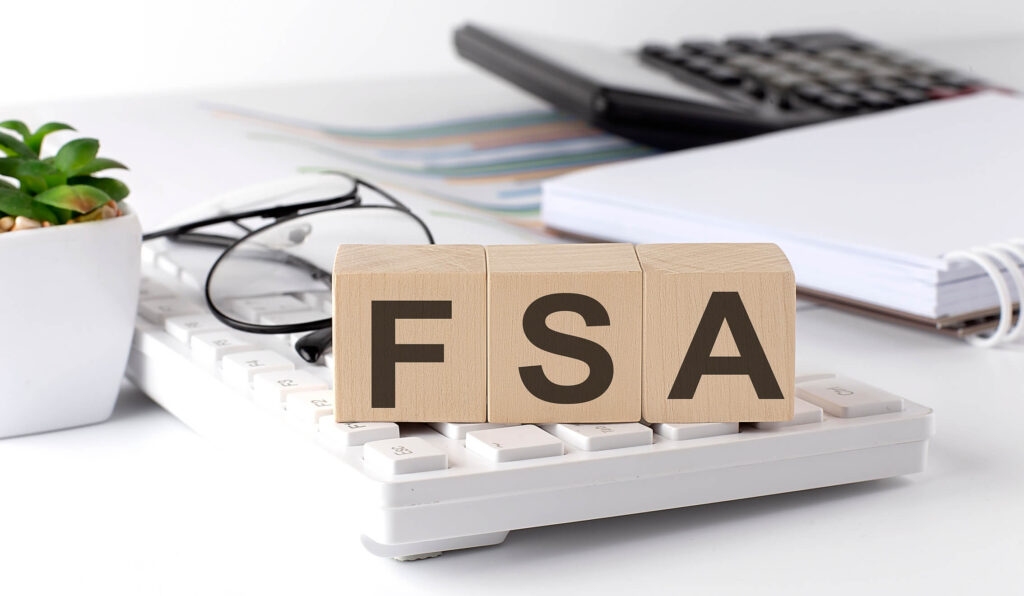It’s kind of a bummer to have to spend your hard-earned cash on things that aren’t much fun but are essential. Things like medical expenses and daycare costs, for example—paying for them is peak adulting. But you can take a little of the edge off with a Flexible Spending Account, or FSA. These accounts can be a game-changer for your budget; here’s how they work.
1. What is an FSA?
An FSA is a special account you can set up through your employer to pay for out-of-pocket healthcare costs and dependent care expenses with pre-tax money. That means you save on taxes, which is always a win!
Money magic: By using pre-tax dollars, you reduce your taxable income, which can lower your overall tax bill. (How cool is that?)
2. How does it work?
You decide how much money you want to contribute to your FSA at the beginning of the year. That amount is deducted from your paycheck in equal installments throughout the year. You can use the funds to pay for eligible expenses like doctor visits, prescriptions, glasses or contacts, and even childcare.
Smart saving: The IRS sets the contribution limits for FSAs. For 2024, you can contribute up to $3,050 to a healthcare FSA and $5,000 to a dependent care FSA.
3. Types of FSAs
As mentioned above, there are a couple of different types of FSAs you should know about:
– Healthcare FSA: Covers medical, dental, and vision expenses that aren’t covered by insurance.
– Dependent Care FSA: Pays for daycare, preschool, and other care for dependents while you work.
Know your needs: Choose the FSA that fits your life best. Some employers offer both, so you can really maximize your savings.
4. Eligible expenses: what’s covered, exactly?
Not all expenses are covered by an FSA, but lots of common ones are. Here’s a quick rundown:
– Healthcare FSA: Co-pays, prescription medications, dental care, vision care (like glasses and contacts), and even over-the-counter medications.
– Dependent Care FSA: Daycare, before and after school care, summer day camps, and even nanny expenses.
Pro tip: Always double-check the list of eligible expenses provided by your FSA administrator to avoid any surprises.
5. Use it or lose it
Here’s the catch with FSAs: those funds are “use it or lose it.” You have to use the money in your FSA by the end of the plan year, or it’s gone. Some (but not all) plans offer a grace period of up to 2.5 months or allow you to carry over up to $610 to the next year. It’s best to set reminders to make sure you use your FSA dollars before they expire.
Plan ahead: Estimate your expenses carefully to avoid losing any money. If you have funds left as the year ends, stock up on eligible items like contact lenses or schedule that dental work you’ve been putting off.
6. How to access your funds
Accessing your FSA funds is straightforward. Most FSAs provide a debit card you can use to pay for eligible expenses directly. Or you can pay out-of-pocket and submit receipts to get reimbursed from your FSA.
Keep receipts: Always keep receipts and documentation for your FSA expenses. You might need them for reimbursement or to substantiate your claims in case of an IRS audit.
7. Tax benefits
One of the biggest perks of an FSA is, of course, the tax savings. It’s always a win any time you can lower your tax bill and increase your take-home pay.
Tax trick: FSAs can save you up to 30% on out-of-pocket expenses, depending on your tax bracket.
8. FSAs vs. HSAs
You might have heard of Health Savings Accounts (HSAs) and wondered how they’re different from FSAs. The key differences are:
– HSA: Only available with high-deductible health plans, contributions roll over year to year, and they can be invested.
– FSA: Available with most health plans, funds usually expire at the end of the year, and they don’t earn interest.
Choose carefully: If you’re eligible for both, consider your health plan and savings goals when deciding between an FSA and HSA.
9. Enrollment periods
You can usually sign up for an FSA during your employer’s open enrollment period. You might also be able to enroll or make changes if you have a qualifying life event, like getting married or having a baby.
Mark your calendar: Don’t miss the open enrollment window! It’s your chance to set up or adjust your FSA contributions for the year.
10. Maximize your FSA benefits
To get the most out of your FSA, plan your contributions based on your expected expenses. Track your spending throughout the year and make sure to use your funds before they expire. Keep an eye out for your FSA administrator’s communications about deadlines and eligible expenses.
Smart spending: Stay informed and proactive to make your FSA work for you. It’s a powerful tool for managing healthcare and dependent care costs.










